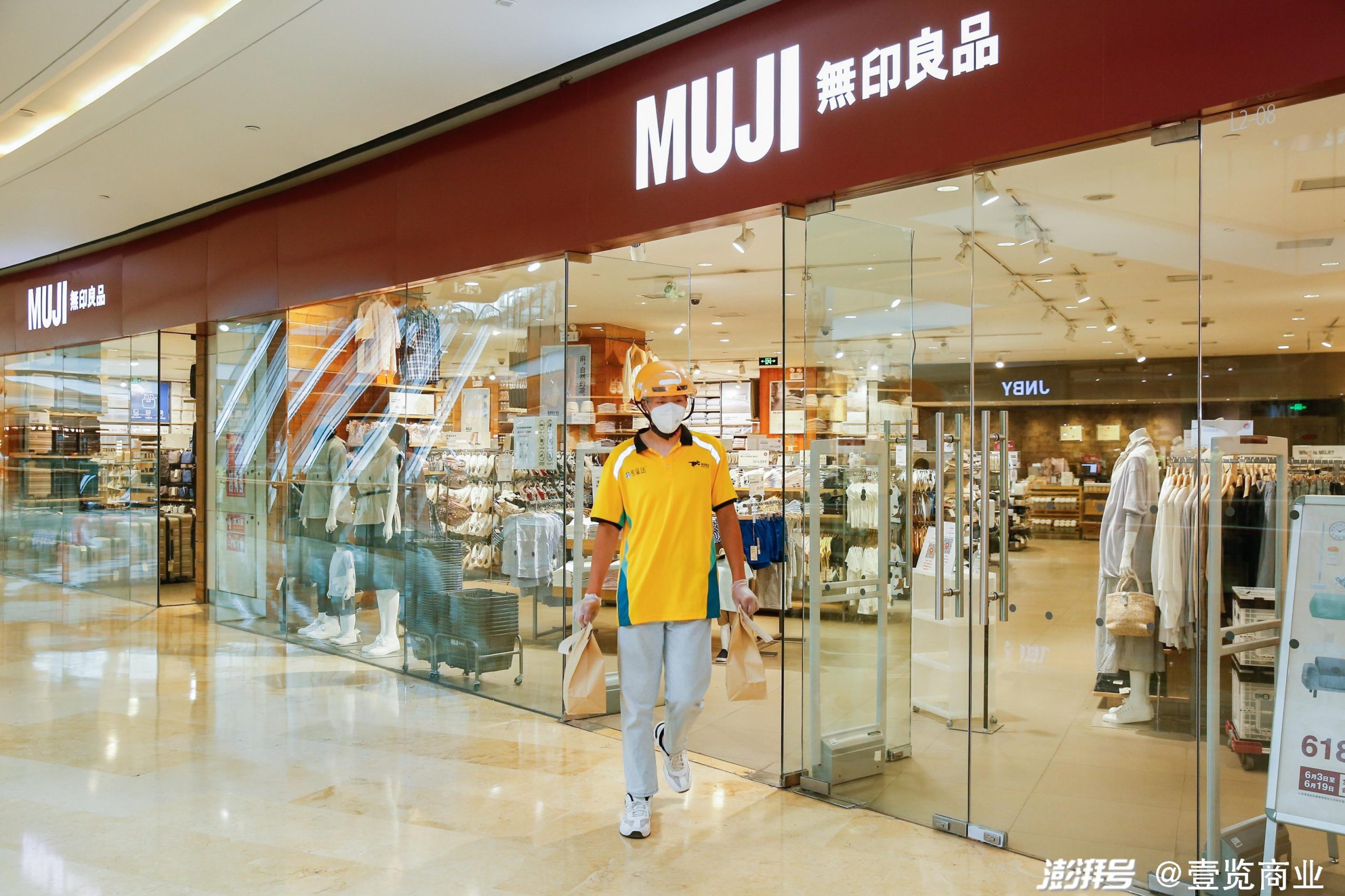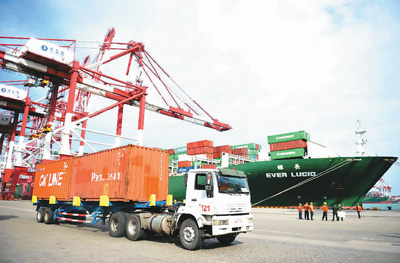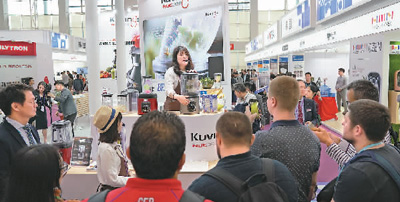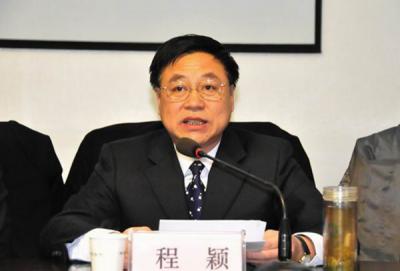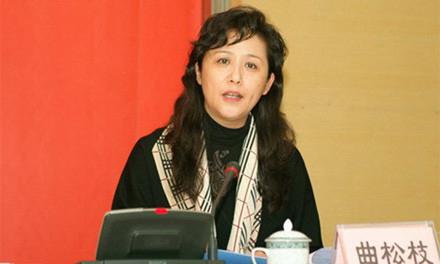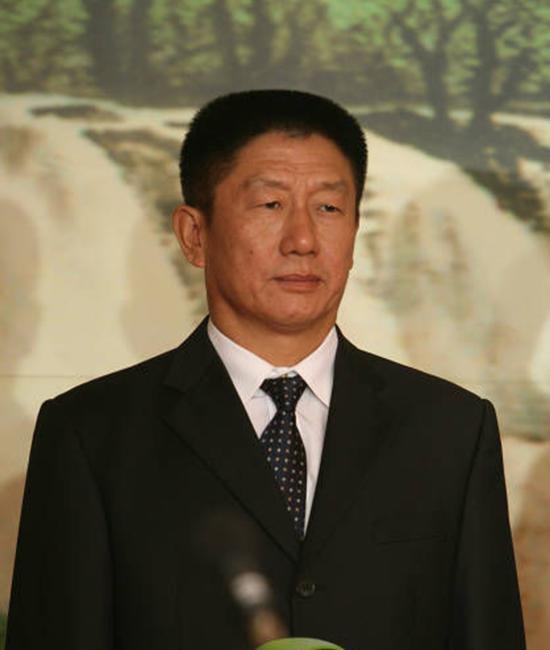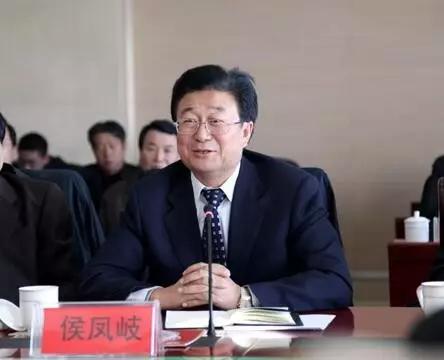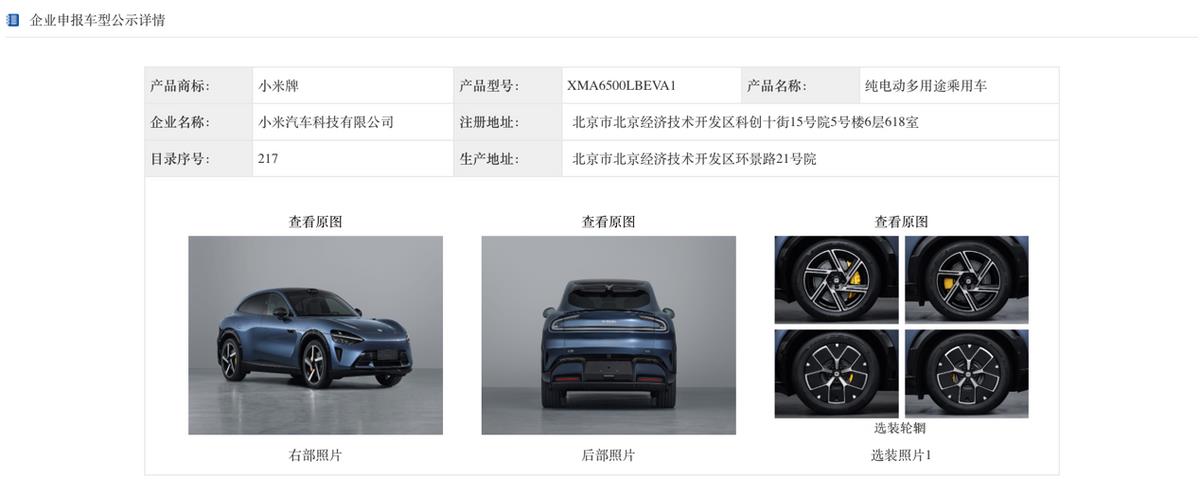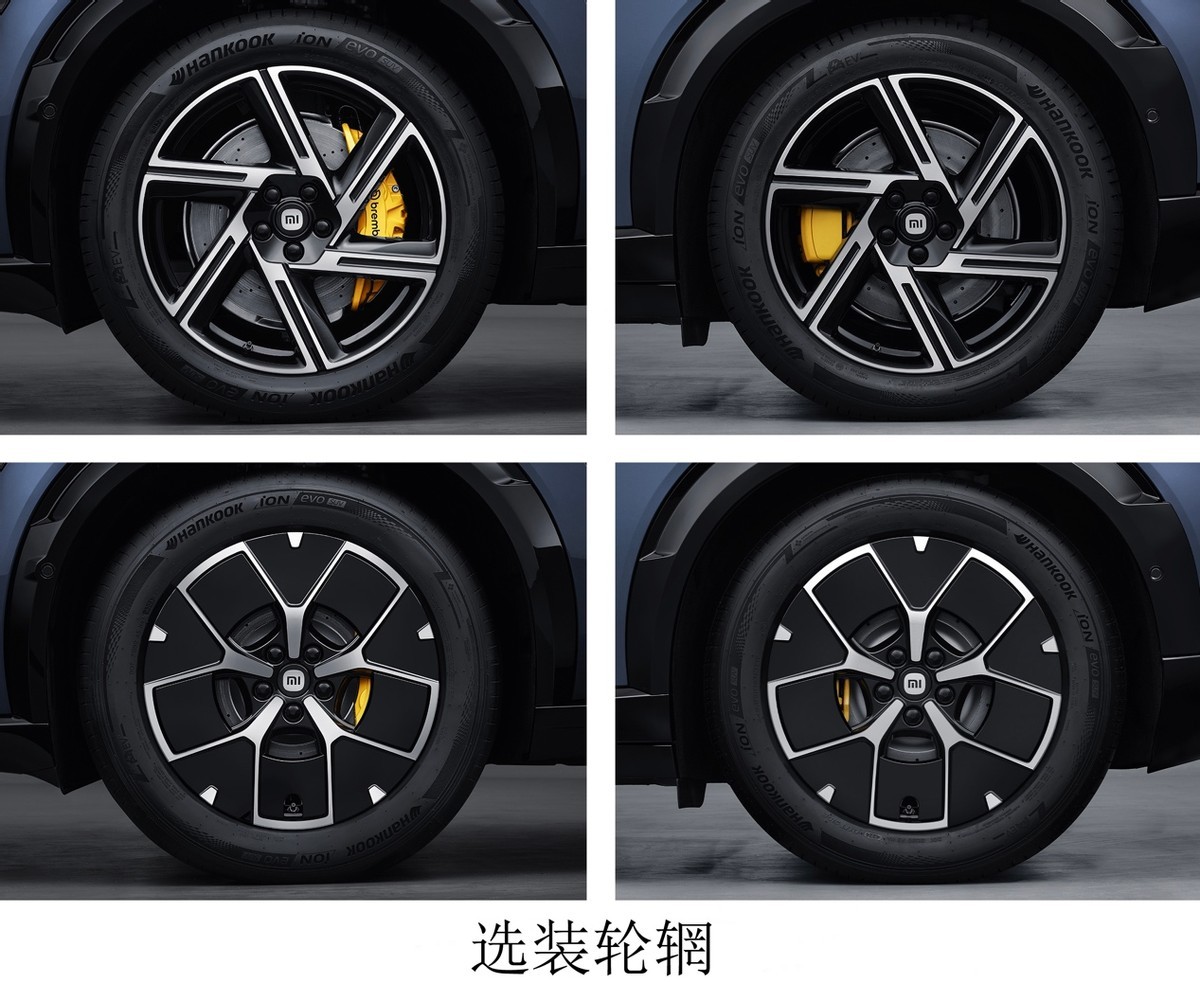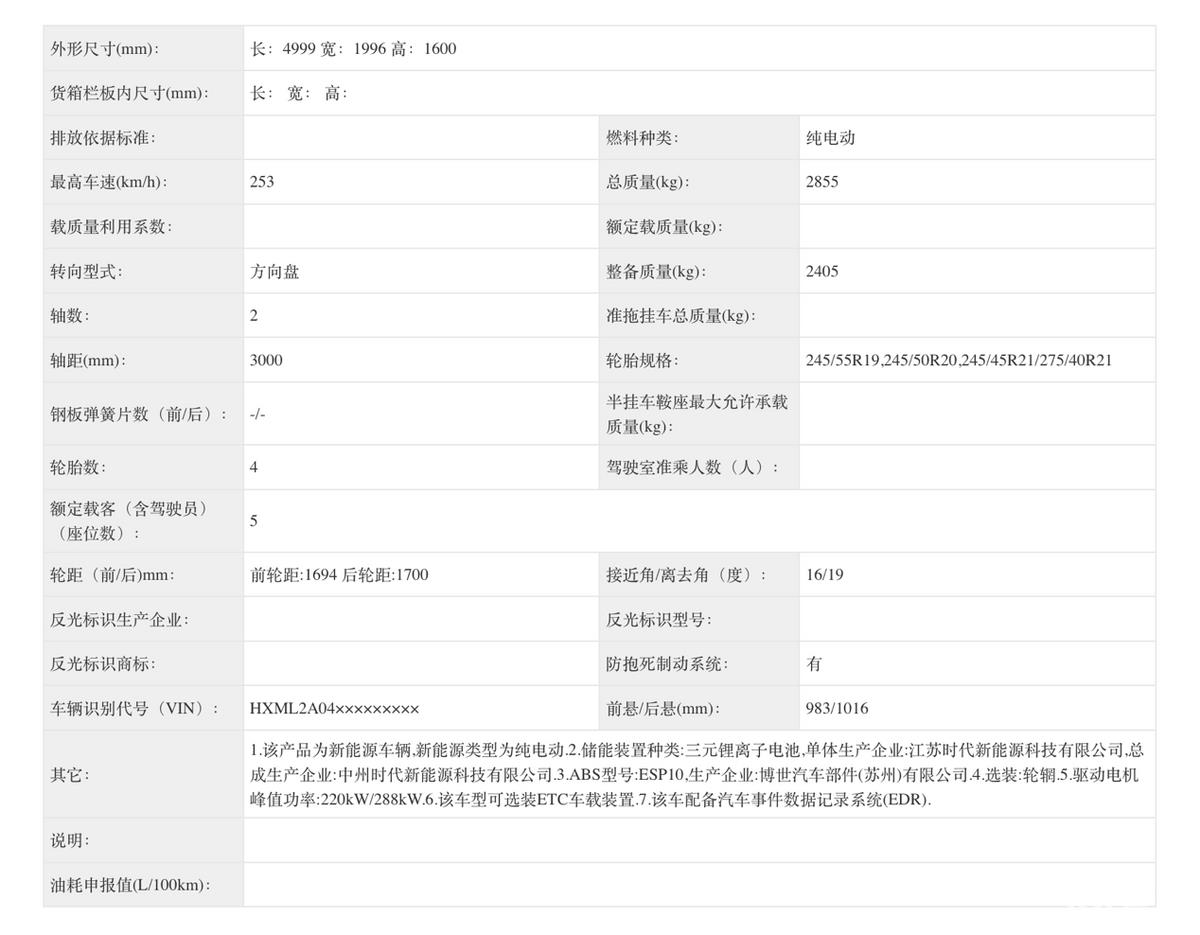In April, 2023, the domestic cartoon Fabulous Beasts, which was produced by Molecular Interactive for three years, finally appeared in the form of instant noodles and animation for two seasons after repeated ticket skipping. Because of the high content of Furui, and all kinds of Furui are covered in the comics, this work has become a "New Year animation" for Furui-controlled audiences.
Since the birth of domestic animation, there has been no shortage of works featuring anthropomorphic animals, ranging from Sheriff Black Cat, Jingjing Panda, Adventures of Little Carp to Cats in Peking Opera, Biography of the Great Wall of Giant Soldiers and Battle of Luo Xiaohei. Since the establishment of Shanghai Film Studio, at least two Furui animated films have been produced almost every year. Entering the period of TV popularization, the cat-type Furui has become the absolute mainstream. Under the Umbrella species effect of the cat-shaped Furui, other Furui images have also been developed. Sanchen Cartoon (Blue Cat Naughty Series) and Hongmeng Cartoon (Rainbow Cat Lan Tu Series) have completed the recognition of the anthropomorphic animal images of the audience by the super-long sets of their respective IP.
Up to now, the animation that firmly occupies the audience of young people is still two anthropomorphic animal IP: Bear Haunted (movie group), Pleasant Goat and Big Big Wolf (TV group). However, only "There are Beasts" claimed to be Furui’s works on his own initiative, and the comic propaganda page directly printed the propaganda text "God beast descended to earth, accompanied by Furui".
Whether anthropomorphic animation can be directly equated with Furui’s works, whether furry is Furui’s core trait, how to develop Furui’s aesthetics, how to balance Furui’s social and natural attributes … How does A Beast Solve these mysteries in his works? This paper will start with a question about Disney animation, and explore the various difficulties surrounding the phenomenal text "There are Beasts" and the Furui group.

Starting with Mickey Mouse: Tracing Furui’s History and Aesthetics
"Mickey is a mouse, Donald is a duck and Pluto is a dog. What about Goofy?" The question of Pluto or Goofy not only comes from Gordie in the movie Stand by Me (1986), but also puzzles many audiences and Disney. When Gao Fei introduces himself, he uses names instead of attributes. The official FAQ can only show that Goofy is a dog as a human character.
However, when the Orc/Furry was created, this problem was solved.
Furui, that is, under the influence of the secondary culture, is the general name of anthropomorphic animal images around human characteristics. If we start from the Categorical Ambiguity Theory (CAT for short) proposed by Ernst Jentsch, Furui’s concept becomes very broad: from landing on all fours to walking upright, from being naked to dressing up, from simply screaming to talking, these fuzzy areas between human and animal classification can all be included in Furui’s category, including of course the different characteristics between Bruto and Goofy. Under the influence of different regions, Furui has formed many overlapping concepts, such as ケモナー (cartoon personification of wild animals) and ケモミスト (animal-ear role lovers) in Japan and Furry and Toto in Europe and America.
From the birth of the concept of Furui, it has a dual category of science fiction and animation. Furry, as a brand-new ethnic concept "orc", can be traced back to the science fiction conference in 1980.[1]; But in animation, furry appeared earlier. No matter Humorous Phase of a Funny Face (1906) or Gertie the Dinosaur,1914), there are animals exchanging identities or talking with people. The image of Furui has long been carried forward in the animal anthropomorphic history of animation, including the variations and innovations of various elements of Disney (such as Mickey, Zootopia and Avatar), and the far-reaching influence of My Little Pony series, which has been on the screen for ten years since the Millennium, and the horse fans have also become another independent classification group.
With the layered development of secondary groups in recent years, Furui culture has become an indispensable sub-cultural force, and bilibili has even formed a UPmain community in Furui District with frequent linkage. Overseas Furui exhibitions such as TFF(Texas Furry Fiesta) and JmoF(Japan Meeting of Furries) are in full swing, and domestic related exhibitions such as Super Furry Fusion and Winter Furry Fusion are also held regularly. It is reported that around 2017, the animal exhibition was independent from the comic exhibition, forming a thematic circle exhibition.[2]. Since June 2023, there are even more than 10 exhibitions in the process of ticket sales or preparation this year.[3]It has attracted a large number of offline interconnection of Furui control groups.
In daily use, Furui is not only the name of the ethnic group, but also the meaning of the actor and the lover, that is, Fursona and Furry-phile. This leads to the separation of the three subjects and objects, because they are all under the same body (la chair) because of the relationship of mutual identification. As a result, Furui obtained the embodiment of self-body visualization and touchability, and the self-reflexivity extended by visual touch. This reflexivity points to chiasm of vision and touch: it gives Furui exclusive mineness. Especially when making animal designs, Furui controllers will deliberately avoid other similar patterns, thus creating an egoic-dwelling with a unique body-image. But at the same time, this kind of body image is a psychological object that Sartre said is connected by fantasy. If the viewer does not realize Furui’s image through intercorporeality imagination, the community identity formed by fantasy race, fantasy body and fantasy object will disappear.
Where does this intersexual imagination come from? It comes from Furui’s original etymology "furry feeling". Before furry became an orc/Furry, it was not a subjective name, but an adjective attribute (Furry, fur-covered, furry to the touch) that evolved from the noun attribute (fur) of the body attribute. Fur is visual, while furry is tactile, that is, Furui is inherently connected with vision and touch.
Is it an aesthetic experience around the visual-tactile linkage caused by furry? For a long time, this phenomenon has not been paid attention to in aesthetic research, and its mainstream view is that aesthetics should be disinterested. It was not until Schustermann, a researcher of body aesthetics, mentioned this "important exception" from Edmund Burke’s "philosophical discussion of sublimity and beauty" that he entered the researcher’s field of vision.[4].
The fundamental problem of Furui’s aesthetic experience lies in whether the core of aesthetics is contemplation or intervention. The representative figure of contemplative aesthetics is Kant, who regards the pure formal object formed by rational contemplation as the real judgment of aesthetic feeling, which means that the subject’s desire needs to be deprived in the dichotomy of "the subject is watching and the object is being watched", and it becomes a purposeful existence without interest, so Furui can only exist as the watched aesthetic object.
In Gao Jianping’s view, intervention is the essence of Marxist aesthetics, which requires that aesthetics should not only be viewed, but form an attitude of actively transforming life. Through practice, production and desire satisfaction, the aesthetic process is discussed, and the theory of contemplation is surpassed. The idea of Marxist intervention in aesthetics is closer to the transformation of life, while Burke’s intervention in aesthetics is physical experience.
Burke has a very pioneering thinking on the body dimension in aesthetic research: he incarnates aesthetics, and then discusses the body senses and the perception caused by it. He believes that body aesthetics should explore the diversity of pleasure, and need more desires such as nerve reaction, experience perception and emotional flow. When discussing beauty, Burke specifically talked about specific objects that can make people feel beauty, namely small things (small animals and beasts), smoothness (fur surface), gradual change (lack of edges and corners, complete lines), delicacy (flowery species), color (clear and bright luster) and eyes (clear rotation). Although Furui was not directly mentioned, all descriptions pointed to fullness. Burke’s interpretation of beauty is to "relax the whole body system to operate." The relaxed eloquence in the natural state is the reason for all the actual pleasant feelings. "[5].
Burke’s interpretation of beauty mainly focuses on the intuitive perception of vision and touch. Schustermann also believes that vision and touch should be integrated rather than separated, and the optomotor nervous system will mobilize the comprehensive experience of seeing and feeling as a whole. Especially after the appearance of image media, although the image has brought spiritual isolation, on the other hand, it has strengthened the audience’s imagination of flowing pictures. Husserl also emphasized the importance of touch and vision to the experience of body perception in his body discourse:
"Everything we see is tangible; In this way, they point to a direct relationship with the body, although not through its visibility. If the subject’s only sense is vision, it can’t have a revealing body at all … The body itself can be constructed at the beginning, but only in the sense of touch. "[6]
In this context, Furui really got the direct perceptual relationship with the physical body, so people saw the furry image and touched the furry object, and then gave birth to the lovely experience, which really formed the Wahrnemung return of the body in visual contact.

"Inhumanity" and "Halloween Street": When the God beast decides to come to modern life,
Furui is an imaginary ethnic group in the context of science fiction, but what if these ethnic groups themselves have a thick supernatural culture as a blueprint?
Fairy stories that have formed collective cultural memories are always "telling fate on the road of eternal return". They are often only reserved as "iconic scenes", which once again reveal the intertextuality proposition of tragedy pointed out by Gérard Genette with various details of changes: these are all events that have happened, and these characters are all images that the audience has heard of the complete story, and they have also become certain attributes in the context of fatalism.[7].
Therefore, in order to adapt the myth, readers should not only dialyze the past memories, but also build a discourse expression that is in line with the present era. The ultériorité dramas of these works are intended to expand brand-new themes continuously, and connect the relationship between classicism and modernity in the way of généalogie.
Therefore, when rewriting the myth, the creators will face a difficult problem, that is, how to put the monsters in different planes under the same world view of modernity. Molecular interaction adopts four distinct ideas in its four pillars.
"Inhumanity" puts it in the rapid development of modern life (the main character will go to work in an nonhuman company); Halloween Street uses the collage of living space to mix the species attributes and professional attributes of each character. "What to do! I crossed into the weakest wild monster (the comic book has been finished) adopts a more ingenious way to unify all the different mythical characters through the game mechanism of Azure World.
"Inhumanity" and "Halloween Street" were created in advance, and formed a complementary world view. They adopted two completely different ideas in the conflict and mediation between Furui’s social attribute and natural attribute.
When Yao Yunfan discussed the stylistic symptoms of Sheriff Black Cat, he put forward the conflict between two orders, one is physical nature, and the other is biological nature. The former relies on the integrity of words that are directly visible in vision and understandable in daily language, and forms an order/attribute closer to society (that is, people) in the change of volume (such as big guys bullying small animals); The latter is the "legitimate basis" for resorting to biology, which is unacceptable to society but regarded as reasonable by nature (such as the female mantis eating the male mantis)[8]This is a more natural attribute of Shan Ye.
Social attributes and natural attributes are just at the left and right ends of the Furui Degree Scale.[9]This will be attributed to standing, dressing and talking like a human being, and more importantly, integrating into modern life; The natural attribute is to land on all fours like an animal, wear no clothes, and not intervene in modern life. Inhumanity is closer to the social attribute, Halloween Street is in the middle, and There is a beast standing at the end of the natural attribute.
Some characters in Inhumanity are based on Shan Hai Jing, such as Jingwei, Xingtian, Nine-tailed Fox, Bai Ze, etc. But more of them are taken from the list of gods, which leads to a high sense of social belonging of these characters. "Unhuman" narrates that the protagonist is the nine-tailed fox in September, and the real protagonist is Bai Ze from the omniscient perspective. It is a daily work that lives in modern society through these ancient monsters. As a standard daily work, there is almost no main plot to promote the role, and the database settings are basically maintained. In this series, most of the monsters try to keep the appearance of modern human beings. Except for a few characters (such as Guanyin, Maitreya, Xingtian and Nezha), keeping the human form is based on transfiguration, and some of them are fine-tuned with their settings and abilities as animals.
"Inhumanity" gives priority to social attributes, and makes social attributes physical, while natural attributes are reduced to visual settings in most daily articles. Sometimes characters can understand each other’s natural attributes and turn a blind eye to their practices (Jingwei always does actions similar to reclamation); Sometimes, the natural attributes are completely unknown, resulting in a comedy effect of cognitive gap (the natural attributes of the stars in September and the Pleiades are restrained).
The source of the characters in Halloween Street is the genie in foreign culture, with three main roles: Nick (goat) in hell, Lynn and Lily in heaven, and Ailer (bat), Werewolf Hairy, Mummy Abu, Zombie Xiaolu, Cat and Peach. The natural attributes of the characters in All Saints Street are changed into abilities, and then corresponding occupations are developed on the basis of ability adaptation. And repeatedly jump between professional attributes and natural attributes, thus forming a sense of comedy.
Readers can see when reading two cartoons that the corresponding occupation of each character in All Saints Street has professional characteristics, while it is almost impossible to find a corresponding occupation in Inhumanity.
"There are beasts" simply cancels the setting corresponding to the social attribute of occupation, and its roles are all from the beasts depicted in Shan Hai Jing. The story is in Shan Ye, which is far away from the modern society (the author collected the scenery in Yunnan). Around the core scene of Deer Shop, the story looks for the main line of lost memories with seemingly endless daily cover-up.

The essence of the Deer Shop is the House of Everything (よろずや), which comes from an organization mode of Japanese society and exists as a pre-modern workplace without business scope. Due to its special properties, Wanwanwu can almost accept all kinds of problems in daily life and residents’ service, and its problem-solving methods are also closely related to private detectives.
The development of Deer Man Shop in Shan Ye also lacks the discipline of modern grand narrative. As a narrative hub, it connects all kinds of Furui in Shan Hai Jing, which were originally unrelated, in physical space.
Although in the movie Our Winter Olympics, it is said that the non-human company where she works is also a wanwu house in September, the movie presents scenes such as PPT modification, constant meetings, and work in the cubicle, which are only available in urban and online life. This means that the everything room in Inhumanity is essentially an internet company, and these roles must also be deeply involved in modern human life, especially in clerical work.
Although Deer Shop has not become a structural component of modern society like a non-human company, it is still in the process of modernization, and the key point is dress and the eye of jade bird monitoring, which has also become a direct visual presentation of the tragedy of A Beast (officially dubbed "hair knife").
There are Animals: Furui’s Three Body Forms
In "There are Beasts", all Furui can be roughly divided into three body forms, standing, landing on all fours and fierce beasts. Each body shape corresponds to the alternation of different aesthetic experiences, the transformation according to the time series plot, and the endogenous survival crisis of Furui.

The first body form is the two-legged standing and human dress mentioned above, which represents the discipline itself.
Standing on two feet is close to human beings from the visual outline, while human dress is a unique shame that arouses human beings from ethics. Animals don’t realize that they are naked, which is an original scene from nature. Even if they look at each other, they won’t send out social judgments with ethical reflection from the eyes of the viewers.
However, as Jacques Derrida said, as a human self, being naked in front of Furui will still feel "a shame of looking at oneself, a shame of being ashamed of oneself, an unreasonable and unspeakable shame".[10], because animals use the line of sight that they don’t know, forming a picture to be watched.
In order to block the transmission of "naked (animal)-watching-naked (human)", dressing becomes necessary. As a unique characteristic of human beings, clothing absorbs all other characteristics of human beings and forms a "conceptual concept" and completes the most important functions: shielding the eyes that are seen and integrating into the modern structure. That is to say, no matter whether the body is Furui’s appearance or not, when it is dressed, it changes from a beast [feminine] to a sovereign [masculine ](la bête et le souverain).
In The Beast, there are four characters who have stood on two feet and dressed as human beings for a long time, namely, the deer owner, the four elephants, the barber shop manager, the rabbit and the representative of the hell, and the doctor, the stamen bird, who will appear later. They all have their own clear professional identities in modern society.
The physical relationship between the protagonists in this play also shows more internal difficulties of Furui. The most important thing is the attribute conflict between the store name "Deer Man" (social attribute) and the animated name "Beast" (natural attribute), which has reflected a kind of entity presence and identity absence. The core of deer people is "people". In "There are beasts", as long as the characters who appear as people are only external outlines, they cannot be clearly distinguished. However, all the people who went to Deer People’s Store for help were "animals", and the Furui people did not have a clear understanding of this identity violation, and they were in a vague "ambiguous" state. However, the ambiguity of the sense of boundary echoes the extensiveness and self-reference of the Furui group in reality.
The existence of the "four unlike" reflects Derrida’s "hiding state with a mask". Although he can also be transformed into a four-legged body, as a deer (animal), after inadvertently peeping into the secret, he was instructed by a god (person) and made a standing Furui with a mask of the remains of four different animals, that is, a masked man (I ‘homme Ouloup).
The name of Sibuxiang appeals to its own exclusion. He is "unlike" any living thing and does not belong to any animal, Furui, human and himself. This title also replaces the ancient beast Sibuxiang, who has long died (the first Furui who died at the beginning of the work). His existence refers to a kind of absence. When being called by the brave, his literal presence and the lack of ontology finally appear as a persona.[11]. In the last episode of the first season of the animation, the body of the four elephants was in severe pain, and the unintentional remark "How can a god beast get sick" also revealed that the four elephants, as homo politicus, were always struggling with heterogeneity.
Accompanied by human dress, it is the robot bird bluebird in the form of a god beast. Jade bird is the symbol of the information transmitter in the story of the god beast, but it loses its signifier in "There is a beast" and completely becomes the symbol of monitoring. Jade bird has lovely big eyes that are completely out of proportion to its body, which activates furry’s another adjective "creepy" and also makes Furry’s visual image fall into the Uncanny Valley.
Thus, Jade Bird and Four Elephants form a group of monitors with or without self-will. There are not many scenes of Jade Bird in comics, but it appears in every episode in animation, and even appears in the quiz at the end of the film. There are gods (people) who ask the Jade Bird questions and let it answer them accordingly. This is a supplement of knowledge instead of physical experience, which borrows a lot of classical Chinese content in Shan Hai Jing to make Jade Bird adapt quickly and integrate into the environment of monitoring the whole beast universe.

The second body form is a furry beast that lands on all fours.
This is the most common image of Furui in the works. Almost 80% of Furui is on all fours, which is different from other previous Furui animations. At the beginning of this paper, I have described the famous Furui animation works at home and abroad, but as can be seen from the image, most of Furui’s images before "There are Beasts" focused on "personification of animals", and the key is to fully approach human’s social attributes with animal images, forming a large number of works standing on two feet and dressed by human beings, among which Zootopia is a typical one. Once Furui is drawn on all fours, he will be deprived of his ability of dialogue and communication and become an unspeakable Bruto. From this perspective, the benchmark work of "There are Beasts" is "Little Pony", while the benchmark work of other Furui animations is "Equestria Girls".
The cartoon style almost completely satisfies Furui’s hair texture, with "a texture similar to crayon material for character lines", while the animation "extracts lines and colors separately and attaches materials in the later process, and finally paints the lower part of the character with the same granular material as the art background".[12]Get a line effect similar to that of comics.
In order to strengthen the affinity between Furui and nature, quite a few Furui in the comics have other names for plants, such as the Meng family (walnut, oleander). In the sales information of mushrooms/tree pins at the end of each episode of comics, the corresponding plants are also connected with Furui.[13].
At the same time, in order to better realize the life resonance like Gaia hypothesis, the scene art production team collected a lot of scenery in Yunnan, where the animation was taken, and formed a detailed plant taxonomy.
However, Furui, who landed on all fours, don’t have human attributes directly. They are more like "monster beasts with mythical or linguistic nature"[14]There is a natural estrangement from nature, and its physical perception will be incomplete, as if it were hurt by a dizzy and strange illusion. Although the Furui textures in real life are different, they can always see the most similar outline. They have similar basic body radians, and add or delete them on this basis, and cover people’s bodies by adding fur (that is, animal clothes). With a seemingly naked fur, they cover the really naked flesh with a prothétique structure, but at the same time, they also form restrictions on normal movements and are too hot to breathe.
At the same time, the animation group personifies the ancient memory loss and pain that must be recovered in comics, which is not nostalgic, as a "knife", and hides it in the high-definition pixel (500% magnification according to the creator) of the last frame of each episode of OP, which leads to the psychological and physical sense of traumacore.
The same is true of a large number of Furui in "There are Beasts". Almost all the characters who appeared in the first season of animation have physical disabilities: Jinjiao with missing horns, Yinjiao (mouse), gluttonous (peach and peach) with only brains left, highly emaciated mouse who spits treasures, chinchillas and cats with failed body grafting, and Pippi who has lost his memory. Even though the external images of the Furui people are cute, it is precisely because of this sense of offensive lack of vision that they cover up the difficult survival dilemma of complete self-identity (l’ipséité de l’ipse).
The cuter you are, the closer you are to the grotesque. In "On Cuteness", Yasuhiko Sifang said that きもかわ (both disgusting and cute) and かはゆし (too dazzling to look straight at) have strong affinity. He believes that nausea and loveliness are formed by "overlapping, mutual traction and interdependence." When we think something is cute, grotesque also becomes a condiment. " Therefore, Sifangtian developed Freud’s theory of terror psychology and proposed that "when the origin is suppressed or hidden", intimacy will be transformed into terror. This sense of terror originally comes from the "physical defects of newborn objects: huge eyes different from ordinary people, short legs disproportionately compared with the head, hairless, thin and slender bodies" [15]Together, they form an intuitive visual experience for the lovely Furui.
So Derrida thinks that the imaginative capture formed by Furui is incomplete, not only physically, but also aesthetically. Between the double pull of animals and people, Furui has congenital pain and trauma:
"The ego (moi) acquired by animals must be short of’ me ‘(Je), and this’ me ‘(Je) itself can only rely on a definite signifier of arrival: the ego (of animals) lacks this’ missing’ … animals exist on the conscious ego side, while the human nature of human subjects is on the unconscious (social camouflage) side … forming a kind of self-deception (sertomer).[16]

The third body form is the fierce beast form that is really close to Shan Hai Jing.
Furui’s body standard, from the perspective of de-loveliness, is actually "a natural deformity that deviates from human standard body"[17]Although these spare parts are not cute to watch alone, they lose their aggressiveness when combined and will not pose a threat to mankind. However, if the lovely aesthetics no longer acts on these objects, it will make people feel a strong sense of fear and be full of danger and destruction.
This is also the reason why many horror movies put seemingly cute children in them, such as Rhoda (the first child villain in the horror movie) in Bad Seeds, the sisters holding hands in The Shining, the tricycle girl in Nightmare Street, and the only surviving child at the beginning of The Great Escape. At the same time, children also have natural curiosity to ignore taboos, and driven by strong illogical sensibility, they can easily break the barrier of rational discipline set by adult society to protect themselves.
As a comic title, There is a beast, which seems to follow the cute cute cute beast. After the word "There is a beast" appears in Shan Hai Jing, there are strange and treacherous beasts of all colors, which show lost face, which is the lofty embodiment of nature that has not been recognized and conquered by human beings. When they turned into fierce beasts, their petite, smooth and round bodies were all torn and stretched, and they became monsters with fierce bodies, interactive teeth and huge shapes.
They are "like tigers and oxtails, and they sound like barking dogs." Its name is Bi, and it is cannibalism "; They "are shaped like sheep and have a ponytail, so they are called sheep, and their fat can be waxed"; They are "like cows and hedgehogs, called Qiong Qi, and sound like dogs, and they are cannibals".
Most of these fierce beasts are recombined with parts of other established animals, that is, they are not specific creatures, but mixed creatures. The word used in The Beast and the Sovereign is Kentauros (half man, half horse), and its adjective kantons means rough beast. In Shan Hai Jing, these mixed creatures are extremely aggressive because of the existence of self-multiplicity, which leads to the lack of independent will. Their relationship with human beings is mutual predators, and there are both "cannibalism" and "eating" in the book.
As mentioned earlier, the mutilations of Furui’s bodies in "There are Beasts" are not the accidental work of the animation production team, but the natural gap left by the collage of mixed creatures described in ancient books, which is the connection between "such as … such as …" something in the book. At the same time, it is also a phantom limb that has been superficially completed after the transformation from Furui to fierce beast. Therefore, from the perspective of body perception, the destructive power of fierce beasts is not only outward, but also inward, cutting themselves.
Cutting not only the body, but also time and space. This is the most essential tragic theme that runs through the whole story of "There are Beasts", and it is also the pain of all Furuikong when he enters and bids farewell to this group.
It is not recorded in Shan Hai Jing, but scattered in other ancient books. It was first published in The Book of Rites Quli, where there is a loyal beast before, it contains a saying. The etymology of brave and brave is originally a fierce beast that is summarized as a class. At the earliest, it also lacked a clear entity, and it appeared together with other beasts (bears and tigers). In the lyrics of "There are Beasts" OP, it is literally the budding imagination of readers (people) living in modern times about the ancient world’s beasts, but it is also the imagination of the "non-existent" creature who is outside the universe of Shanhaijing to coexist with other beasts. Similarly, the four elephants, the rabbit and the sincere listening mentioned above are not included in the records of Shan Hai Jing.
This endows the existence of fierce beasts with the heaviness of ancient memories. It seems that there are no them in the Shanhaijing universe that can become common descent. They originally looked at this ancient world in a non-participation way (ohne mitzumachen), but they met in series with fierce beasts distributed on the mountains in all directions.
It is precisely because Pippi forgot the "missing itself" that he met and got to know other beasts in Deer Man Store, and then he had a new story. When he recalls the past history, the present memory consciousness will be reset and covered, and finally he has to choose between the environment (UmWelt) and the past world (welt). The tearing pain of this choice is no less than the horizontal tearing of natural attributes and social attributes mentioned above, but it must be torn vertically between the ancient world memory and identity recognition that cannot be repeated and the modern world with relaxed and humorous daily life. After all, Deerman Store is both a supervision and a shelter, and it is a paradise for Furui to get along with based on "false memories".
Therefore, the story must be carried out in a circular way and forgotten again. Whenever faced with a choice, it will be thrown back to the starting point in the form of Mobius ring. This is the story of the stranded animal island, which is the third suspended parallel space independent of the present world and the ancient world, and is unfolding in constant rescue and escape.

The story of "There are Beasts" is full of bittersweet, just like stories of different worlds are nested in comics, so that it is necessary to rely on the previous reminder of "See the XX words" to connect the polyphony between the Furui lines. This intense dimorphous response repeatedly jumps between cuteness and injury, and finally becomes the contradictory symbiosis of cute aggression.
The same is true of Furuikong’s living space. As the second cuteness product of kindenschema, Furuikong points to the past (childhood) and fantasy at the same time with the furry image of the present. Babies always grow up, become teenagers and get old. Furui doesn’t. Like a cat, he is covered with a furry body. This parallax illusion seems to have the magic of fixed time. It has always existed in the form of Peter Pan syndrome, and one day it will have to break the dream of pumpkin carriage, just like the brave and four elephants.
But what about this?
Even if you have to forget the present and have to go back to the past, the traces of their present life will always be seen by the bluebird. Although the Jade Bird is a kind of non-human gaze (Wondering at the Inhuman Gaze) and a Foucault-style supervision, it still faithfully records all vision.[18]. Behind the bluebird is not only a shining god (person) from heaven, but also a reader who has been watching the story.
Furui’s consolations with each other in "There are Beasts", whether it is listening-Bai Ze, pig-bobcat, cat’s tears-Panhu, and Qiong Qi, are Cute-love built beyond the normal emotional relationship in the world. This love is also true in Furui control: through the reunion of furry people, the fictive kin relationship formed between them shows strong tolerance and belonging recognition. "The sense of belonging to the social circle is a major feature of Furui group, even in 2023, when decentralized society is highly developed."[19]. This sense of identity drives them/us to maintain a deer shop that seems to be in danger but can always help the beasts.

Notes:
[1] Patten, Fred. "Retrospective: An Illustrated Chronology of Furry Fandom, 1966–1996". Flayrah. Archived from the original on 2016-04-05.
[2] Play with people from generation to generation. A suit of "fur" is worth a small sachet. What are the young people in the "animal circle" consuming? [OL]. 36Kr, https://www.36kr.com/p/1708166923523845
[3] Exhibition information was compiled and collected by UPP owner Lopei sama in Furui District [ol] https://www.bilibili.com/video/BV1Lo4y177Gq.
[4] Chen Xinru. Renewal and reconstruction of aesthetic categories in the era of social media [J]. Southern Literature .2021 (6): P33
[5] Edmund Burke. A Philosophical Enquiry into the Origin of our Ideas of the Sublime and Beautiful,Oxford University Press,1998.p39、136.
[6] Dermot Moran. Subjectivity and initiative [J]. Translated by Luo Zhida. Shenzhen Social Sciences, 2019(05):p41.
[7] [France] Tiphaine Samowayo. Intertextuality Research [D]. Translated by Shao Wei. Tianjin People’s Publishing House, 2002: P107-108.
[8] Yao Yunfan. The difficulty of catching mice: The Black Cat Sheriff and the representation of the new order [J]. Contemporary Culture and Literary Theory. 2019 (1): P207, 211, 213
[9] There was a popular piece on the Internet called "ケモのぼろぅ! ! The stem map of "Furui" is divided into five levels, namely, from left to right, human, ear and tail, increased hair, naked body, unlike human bones, and human-anthropoid-anthropo-feral-animal, which can shuttle through Shan Ye (pure animals). [OL] 2010-06-16. https://www.pixiv.net/artworks/11313122
[10] [France] Derrida. Deconstruction and the future of thought [D]. Translated by Du Xiaozhen, etc. Changchun: Jilin People’s Publishing House, 2010.11:p114
[11] [France]. Derrida. Beast and Sovereign. Volume I [D]. Translated by Wang Qin. Xi ‘an: Northwest University Press, 2021.12:p20
[12] The other side. Furui animation made in China, which I didn’t expect [OL]. Animation Academic Party. https://mp.weixin.qq.com/s/L-_cjhqFfb847DehkACH9w., 2023-06-24.
[13] For details, please refer to the sales information of "There are Beasts" after the 745th sentence in the comic book: Listen to the sky-blue mushrooms, such as Qiong Qi Blood Tooth Mushroom, Rabbit Ye Xia Oak, Zhuang Zhuang Lemon Tree, Balingjun Du Ying, etc.
[14] [France]. Derrida. Beast and Sovereign. Volume I [D]. Translated by Wang Qin. Xi ‘an: Northwest University Press, 2021.12:p49
[15] [Japan] Yasuhiko Yasuda. On Cuteness [D]. Translated by Sun Mengmeng. Jinan: Shandong People’s Publishing House, 2011.2:p71
[16] [France]. Derrida. Beast and Sovereign. Volume I [D]. Translated by Wang Qin. Xi ‘an: Northwest University Press, 2021.12: P205-206
[17] [Japan] Yasuhiko Yasuda. On Cuteness [D]. Translated by Sun Mengmeng. Jinan: Shandong People’s Publishing House, 2011.2:p77
[18] Sean D. Kelly . Wondering at the Inhuman Gaze[J]. in Anya Daly, et. al. (eds.) Perception and the Inhuman Gaze (New York: Routledge, 2020): p239-253.
[19] Bao Xiang, Dr.B B. Furui, but gay-a cross-ecological discussion between animal fans and gay men in mainland China [OL]. Zhihu. https://zhuanlan.zhihu.com/p/595827268
